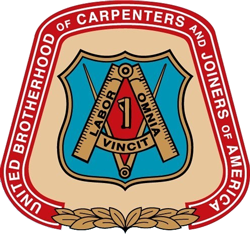Could the Carpenters Organize Housing Construction Workers?

This is super inside baseball, but here’s the deal–the United Brotherhood of Carpenters was very supportive of the new bills in California to allow for more housing to be built. That really helped the whole process along. But the Carpenters also pushed for a minimum wage in construction that the other building trades union condemned as selling them down the river. Now, that might seem bad. But the trades organize no one. It’s just holding on to government projects by and large. So what the Carpenters are doing here is making a play to actually organize housing workers. How you fall on this complex issue depends on what you value in the labor movement. Here’s a good article explaining the whole deal.
With the Carpenters’ backing, lawmakers and Newsom last month tried at the last minute of budget deliberations to push through a version of Wicks’ bill that included minimum wages for residential construction workers. The proposed wages were higher than most of the typical non-union wages for private developments, but $40 to $60 lower per hour than the prevailing wages required on publicly subsidized projects — a state-calculated figure that amounts to union-level pay.
Backlash came swiftly. Following the Trades’ lead, union leader after union leader lined up at the Capitol to slam the proposal, arguing it would undermine their members’ higher wages. Lawmakers quickly scrapped the proposal.
“The Carpenters, in my view, are a pariah” in the labor movement, said Scott Wetch, a lobbyist for Trades-affiliated unions representing electrical workers, pipe fitters and sheet metal workers. “They’re willing to sell all workers down the river and pursue really unlivable wage rates so they can try to capture other unions’ work.”
But lawmakers say what caught their attention was more of a philosophical difference. Non-union laborers produce the majority of the state’s housing, and the Carpenters’ approach viewing them not as cheaper competition but as potential members of their union has made them “game-changing,” Wicks said.
“The role of unions is to protect the workers in their organization,” said Danny Curtin, director of the California Council of Carpenters. “But in the larger perspective, it’s to protect all workers, and then bring them into the union movement.”
he intra-labor rift is as much a story of the American workforce as it is of California politics.
With the exception of affordable and publicly subsidized projects, housing has been largely built with non-union labor for decades. In the late 1960s, corporate giants began backing contractors to resist union demands and promote non-union labor. An influx of immigrant workers, willing to accept lower pay, made it possible. Construction unions of all stripes found the small, scattered worksites of the residential market too difficult to organize when larger commercial, industrial or public works projects provided members steadier work, said UC Santa Barbara labor historian Nelson Lichtenstein.
Labor groups see home building as the Wild West of construction, rife with fly-by-night contractors, wage theft and physical hazards.
In 2001, the national United Brotherhood of Carpenters and Joiners of America split from the AFL-CIO, which includes the building trades unions. Douglas McCarron, president of the national carpenters’ union, claimed at the time that the labor umbrella group was overly focused on protecting existing members and failing to “shift resources to organizing” new ones.
In 2022, Jay Bradshaw, the then-newly elected executive secretary-treasurer of the Northern California Carpenters Union, brought that approach to the state’s housing debates.
Before then, development advocates and lawmakers could barely even introduce housing streamlining proposals without the Trades’ insertion of their favored labor standards, lobbyists and current and former lawmakers said. Sometimes, the Carpenters agreed with them.
But Bradshaw, who did not respond to interview requests for this story, was motivated by low pay and labor violations on non-unionized residential jobsites, which he often called “crime scenes,” said Sen. Scott Wiener, a major author of housing bills. Bradshaw wanted housing bills to include rules to improve those workers’ pay and conditions, but in contrast to the Trades, he was OK with those hired not being union members.
“It changed everything,” Wiener said. “It created more space for more dialogue and less of the ‘my way or the highway’ approach.”
The theory was that by improving workers’ conditions and visiting job sites to enforce the new rules, the union could one day organize them.


